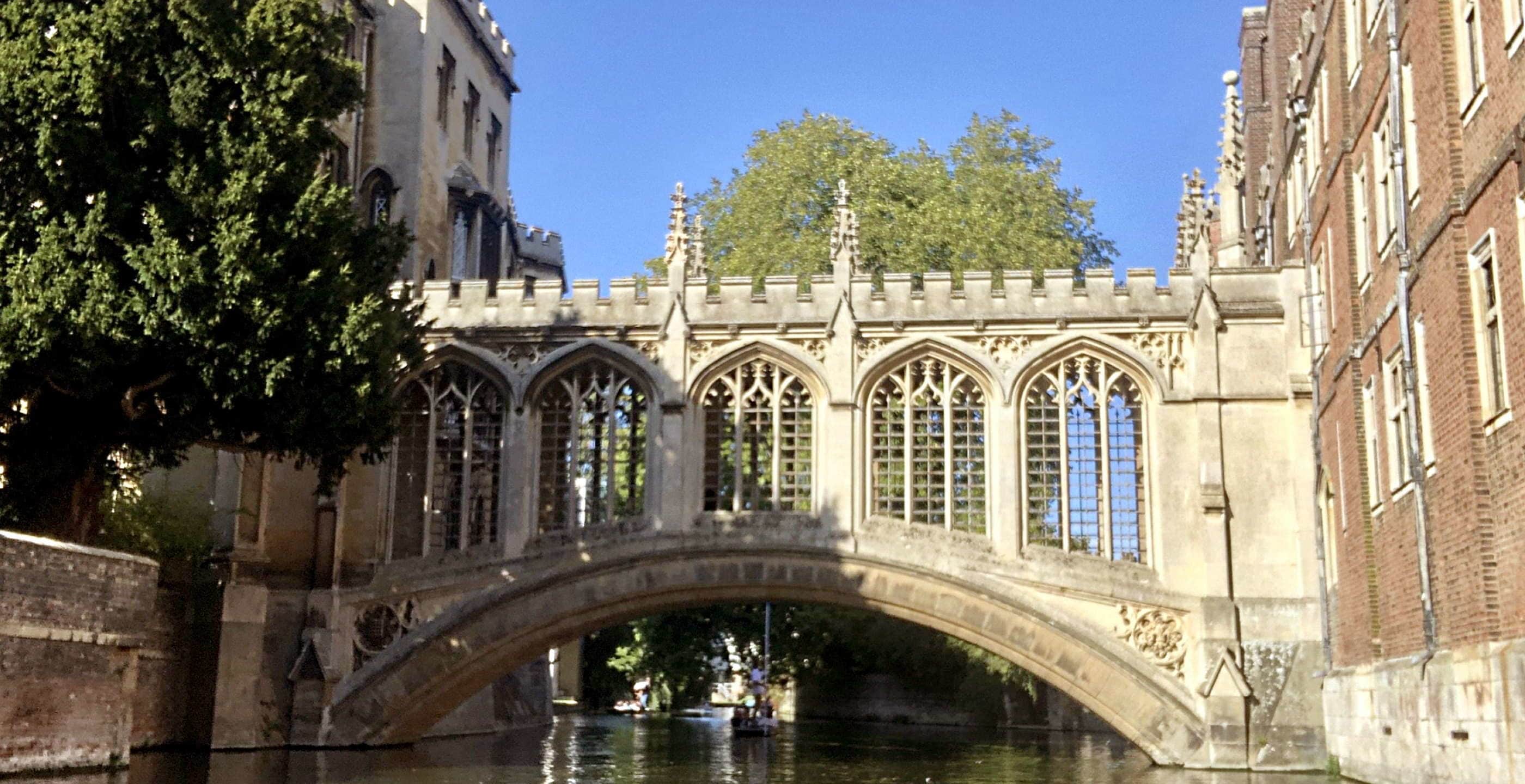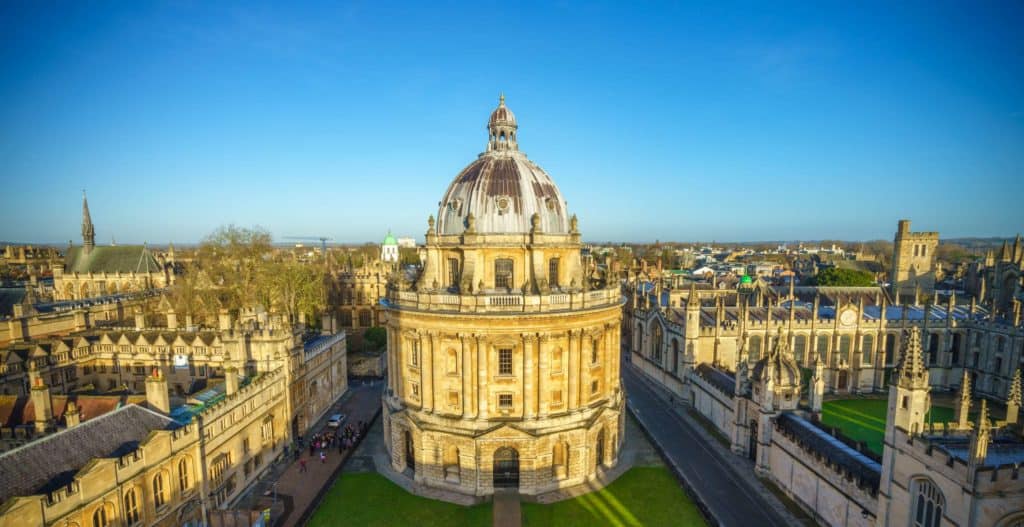It is an interesting dichotomy that, although on the one hand so much is known about Cambridge, simultaneously so little is commonly known about the great city’s history. When people hear the name Cambridge, they imagine the impressive historical spires of the University; they think of learning, knowledge and scholarly pursuits, Cambridge University Press, Cambridge teaching and nervous students sitting exams. In fact, even when you google ‘Cambridge’ on the internet, the first city that is returned in the search engine is Cambridge Ontario in Canada!
In fact, Cambridge didn’t even officially become a city until 1951, which may have something to do with this. Furthermore, in many ways, historically speaking, Cambridge is and always has been the quintessential English town, with the same history as countless other English towns. Roman at its inception, it was then ruled by Danes, Anglo-Saxons, and Normans. It receives a charter and steadily grows more modern and prosperous throughout the coming centuries, despite the common crises of plague and fire, that the majority of England suffered at the same time.
Cambridge is so much more than this seemingly standard historical synopsis however, and there is a particular and compelling reason why; it’s internationally and historically renowned University. Although, naturally, there is more to the history of Cambridge than simply the University, simultaneously, no history of Cambridge would be complete without delving into the story of the University as well, it being such an integral and beloved part of the city.
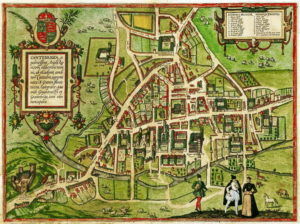 Map of Cambridge, 1575
Map of Cambridge, 1575
Cambridge is an historic city with a typically English yet interesting past. Cambridge was a prosperous market town situated fifty miles north of London. Cambridge has a peculiar claim to fame: it is perhaps the only city that has retrospectively named its own river! The town was built on the banks of the river Granta, which was only later renamed the Cam in honour of the town that had grown up around it. Originally, the river was called the Granta, so consequently Cambridge was first called ‘’Granta Brygg’, it did not become Cambridge until much later. Then, because the town had become ‘Cambridge’, the assumption was that the river must therefore be the Cam, and so that was what it became!
The original permanent human settlement in Cambridge was on Castle Hill and was built, unsurprisingly, by the Romans. Like many places in England there was evidence of human activity preceding this, but it was the Romans who created what would have been the first recognisable town. It wasn’t until Danish rule in around 875 AD that Cambridge would have been considered a middle sized and relatively prosperous town, the Romans having abandoned their hold on the area at the beginning of the 5th century, corresponding with the decline of their Empire. Although the Normans built a castle on Castle Hill in 1068, the only thing that remains of it is an earthen mound. The church of St. Benet was built in 1025 and in 1207 Cambridge received its charter. The tower of St Benet’s church is Saxon and therefore can claim to be the oldest building in the town. Later, in 1318 Cambridge was officially recognised by the Pope, John XXII.
In the fourteenth century it was recorded as a full day’s journey between Cambridge and London, which suggests that traffic and trade was frequent and abundant. However, by 1702 a coach journey took only 15 hours, with a coach service running daily between Cambridge and London by the latter half of the eighteenth century. The river, which runs through the town and out to the sea at King’s Lynn was, of course, ideal for trade. Although today you are more likely to witness tourists enjoying glasses of Pimm’s whilst punting on the Cam, than you are traders transporting their wares on the river.
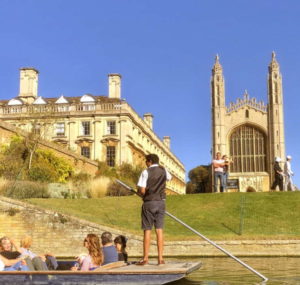
In many ways, during its more modern past Cambridge was a quintessential classic town within England. It was hit with severe bouts of plague in the 1600s, very much like a lot of the country at the time. It suffered the ravages of frequent fires as for many years, most of the town’s buildings would of course have been made of wood. The town recovered from both fire and plague though, and continued to grow and prosper. It had its own newspaper in 1744, a hospital in 1766, its first bank in 1780, and was connected to London by railway in 1845.
The town went from strength to strength and from the mid-nineteenth century it was considered both modern and prosperous by contemporaries. At the beginning of the 20th century the population of Cambridge was estimated at just under 40,000 people, but of course today it is estimated at around 129,000! This number does include the roughly 25,000 students who are studying at the University in the city at any one time.
So although Cambridge is both interesting and beautiful, what really sets it so far apart from other historic English towns and cities, is of course, its university.
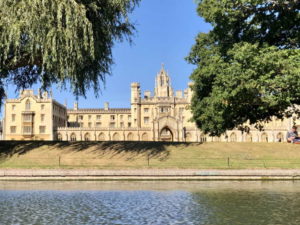 St John’s College, Cambridge
St John’s College, Cambridge
It would be literally impossible to write an article on Cambridge without mentioning its preeminent university. What makes the occasion of writing this article even more apposite (and enjoyable!), is that I actually have the very great privilege of doing so from inside St. John’s College at Cambridge University itself! St. John’s is one of the richest colleges in the University, although the first college to be founded was actually Peterhouse in 1284. Scholars from Oxford had already come to seek refuge in Cambridge as early as 1209, so there was clearly always an intellectual draw to the city even as early as that. This makes the University over 800 years old, and it is widely recognised as the 4th oldest university in the world.
In its current iteration Cambridge University contains 31 colleges, impressive in its own right even before you consider some of the world renowned scholars who have walked it’s grounds. Many of the colleges were founded by famous faces. The most notable is arguably Henry VIII, who founded Trinity College in 1546. Trinity remains the largest college in Cambridge to this day. Not only the largest, it is also the wealthiest, worth somewhere in the region of a staggering 1.3 billion pounds. Then later in that century, Queen Elizabeth I formally incorporated Cambridge University by an Act of Parliament in 1571. Since then the university has continued to grow with colleges being added right up until 1977 with the addition of Robinson college, and it is undeniable that today, the University has become a symbiotic part of the town.
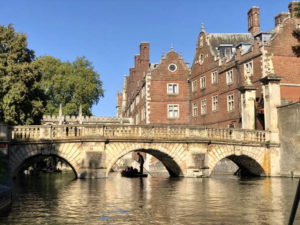 Kitchen Bridge, Cambridge
Kitchen Bridge, Cambridge
One final recommendation, except of course from going and seeing this beautiful historic town in person, would be to read Neal Stephenson’s epic novel ‘Quicksilver’. Although the scope of the novel covers more than just Cambridge, it follows the misadventures of a young Isaac Newton as he performs experiments and makes discoveries at none other than, Cambridge University. He is by no means the only scholar of note to study at these esteemed colleges. He joins the ranks of other Cambridge scholars such as Charles Darwin, John Maynard Keynes, G.M. Trevelyan, Lord Byron and more recently, Stephen Hawking.
This list is by no means exhaustive as it would take several more pages to list every person of note that ever traversed the great halls of Cambridge University. Furthermore, two of the college’s chapels were actually designed by Sir Christopher Wren, and the Mulberry tree in Kings college was allegedly where John Milton wrote ‘Lycidas’! The history and renown of the University cannot be overstated. Cambridge University is also one of very few establishments, like London’s British Library, to hold the honour of being entitled to a copy of every book that is published in the UK.
By Terry MacEwen, Freelance Writer.
